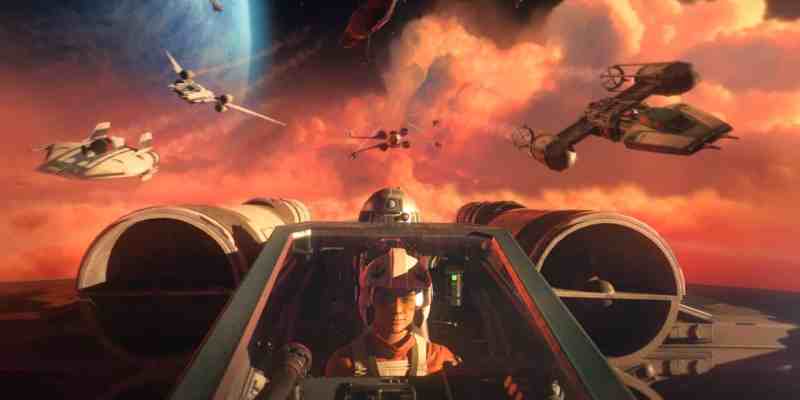Virtual reality is a tricky prospect in gaming. Some tout it as the future of the medium, but we’re still figuring out what VR is truly capable of. There’s still no unified rule set for most genres, with only a handful of agreed upon options supported across most games. Yet when it works, VR can be an amazing asset that vastly elevates a game, which is the case of EA Motive’s Star Wars: Squadrons.
I won’t mince words here: If you’re playing Squadrons with a flat monitor, you aren’t getting the experience as intended. I don’t just mean the immersive game feel of a TIE fighter rocketing around you while you dash across starfields. Rather, there are core utilities and niceties to playing the game in VR that no amount of a Freelook button can offer. That is impressive given Squadrons’ VR integration is, at first, seemingly minimal.
All you can do is poke your head around freely, leaning and turning as you would in a cockpit. Yet from this simple wrinkle, Star Wars: Squadrons goes from a decent dogfighting game to one of the best you’ll play this year. First of all, with VR, you can actually adjust your position in the cockpit, which is incredibly handy as the default positioning for players in flat mode is oddly leaned back, letting your tactical readouts own close to half the screen real estate, even when parts of it aren’t all that necessary. Your sense of perspective in and out of combat isn’t what it should be. This even spills over into briefings and crew member conversations, where flat players are made the shortest pilot in the New Republic and Imperial Remnant for no clear reason.

With Star Wars: Squadrons in VR, you can instantly tell if you’ll fit through a hole or gauge how imposing your co-pilot Shen actually is. Your situational awareness skyrockets with the freedom to just intuitively look rather than relying on on-screen pop-ups that tend to be drowned out by the heat of battle. If an enemy peels off, your visual scanning can stay locked on even while your fighter pivots to catch up. You aren’t limited to what your front dashboard can see, which also leads to the satisfaction of looking back as your latest conquest explodes in a crumbling inferno.
This awareness is crucial on several maps that incorporate debris and asteroids. Your ability to make snap decisions is genuinely enhanced, letting intuition take over when originally you might’ve had to experiment to get a feel for each level. I can’t begin to count how many kills I’ve earned as a TIE bomber, deftly boosting through nigh-impossible gaps while dropping a proximity mine behind me to wipe another haughty A-wing off the board.
None of this was nearly as easy when playing the game flat. My initial experience was far more hesitant and cautious, constantly fighting to gauge my presence due to Star Wars: Squadrons’ lack of a third-person camera mode. While I respect EA Motive’s dedication to the first-person cockpit point of view, this can be quite limiting for flat players. Just the sheer sense of feedback from your ship and where it’s at, both in audible groans and visual presentation of your ship, is muted. With proper headphones and 360 vision, I know without checking my HUD when I’ve depleted my laser cannons or have primed a boost for a quick escape.

Squadrons’ most impressive accomplishment though is your sense of investment when playing in VR. All the cosmetic unlocks and customization options become tangible elements of your avatar that you can actually look down at and hear. When you take a hit, it tricks your brain marvelously into panicking rather than being annoyed. It also ensures that the story, as barebones and predictable as it may be, is more tangibly occurring around you. You’re guaranteed to pay more attention to someone talking to you when their eyes track your movement than when you’re just sitting in front of a computer monitor, waiting to get on with the mission already.
In many ways, Star Wars: Squadrons has tapped into the same innate simplicity and depth of Resident Evil 7: Biohazard’s PSVR mode. Resident Evil 7 uses VR solely for aiming, yet it dramatically enhances your ability to engage in combat and its twisted world on a whole. Squadrons does the same, not relying on motion controls or input gimmicks like Star Wars Battlefront – Rogue One: VR Mission. Sure, there are less bells and whistles, but for VR to prove itself, it’s going to need more than that. If more games take Star Wars: Squadrons’ note and offer a purely superior, intuitive experience, then maybe the niche can finally bloom into the wider AAA space.
